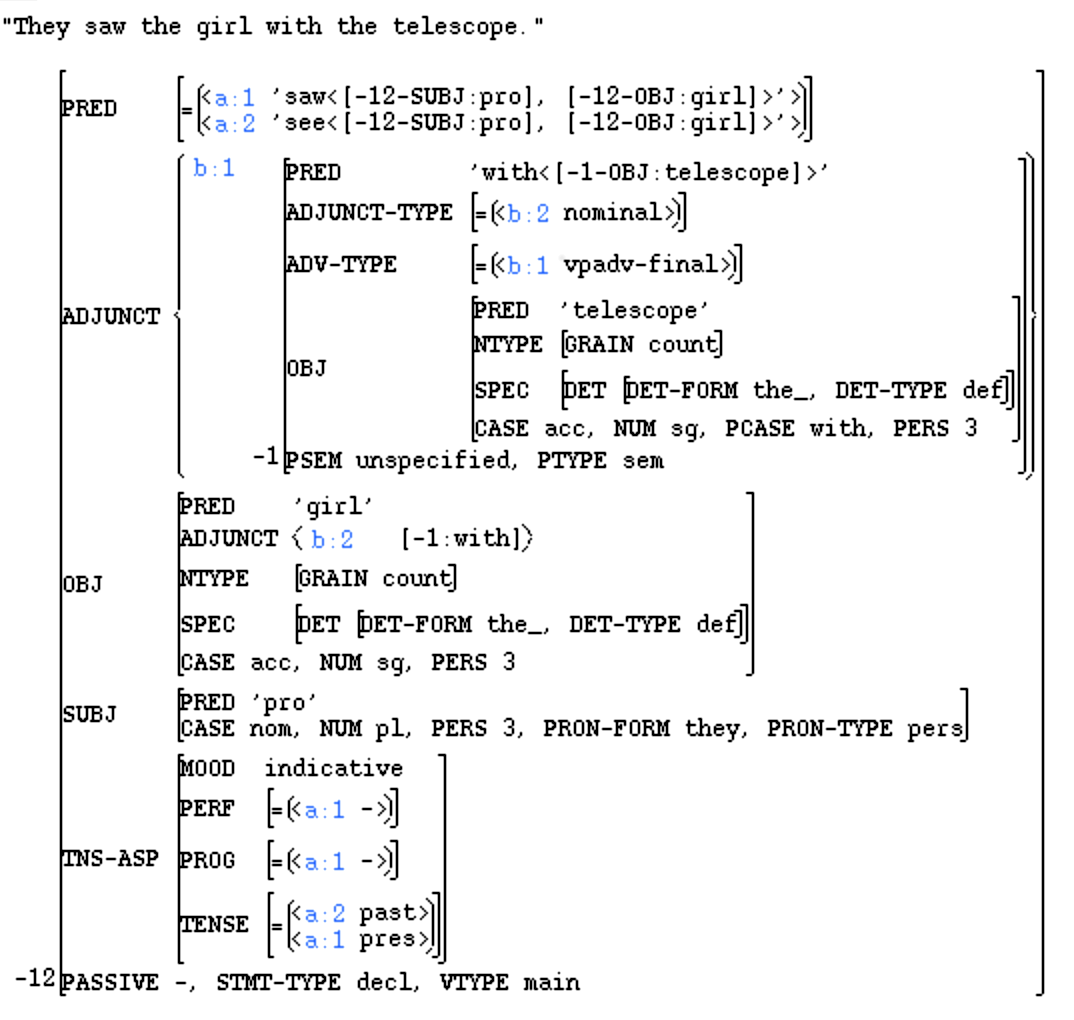Ambiguity Management
XLE produces a packed representation of all possible solutions as its output. This has a number of advantages over trying to pick the "right" solution:
- Picking the "right" solution is usually very difficult, and can be application-specific.
- Producing a packed representation of all possible solutions allows for a pipeline architecture, which is cleaner.
- An application-specific disambiguator should be able to operate on the packed representation and avoid enumerating all of the solutions.
- Some applications may be able to avoid picking the "right" solution. When translating, for instance, you may be able to find a translation in the target language that preserves the ambiguity in the sentence being translated.

"They saw the girl with the telescope."
In this sentence, "saw" is ambiguous between the past tense of "saw" (labeled a:1) and the present tense of "see" (a:2). Further ambiguity arises from the PP "with the telescope" as it can either be an adjunct of "saw" (b:1) or "the girl" (b:2). The contexts a:1 and a:2 are mutually exclusive. Similarly for b:1 and b:2. Moreover, a:1 and a:2 are independent from b:1 and b:2. So this feature structure represents four different solutions. XLE uses a contexted feature structure like this for each edge in a chart to represent all of the possible feature structures that the edge can have.